
Once I started experimenting with homemade sourdough bread, I always had rye flour on hand to feed my starter but I wasn’t sure how else to use it. It tamed my starter, nourishing the wild, flavor-enhancing yeasts and bacteria. It added extra sourness and earthiness to my loaves. But outside of bread, I wasn’t sure how to use my stash.
When I set out to learn about this grain, I began to discover rye’s character from Chad Robertson’s Tartine N° 3 and Magnus Nilsson’s The Nordic Baking Book. Rye and chocolate amplify each other’s earthiness in Tartine’s Salted Chocolate Rye Cookies. Nilsson taught me that Rye likes sweet berries and fruit. It has less gluten than wheat, which I learned when I pushed the rye percentages too far in my pie crusts and croissant doughs. Adding rye flour to cakes made them tender, less sweet, earthy, and nutty.
This rustic Apple Rye Cake combines the rich, nutty flavor of dark rye flour and sweet-tart apple slices. Foaming the eggs and sugar, as in a sponge cake, provides extra structure to compensate for the rye’s limited gluten-forming ability. The buttermilk asserts rye’s sour tone. The apples, cinnamon, and nuttiness affirm the cake’s place at autumn and winter’s table.
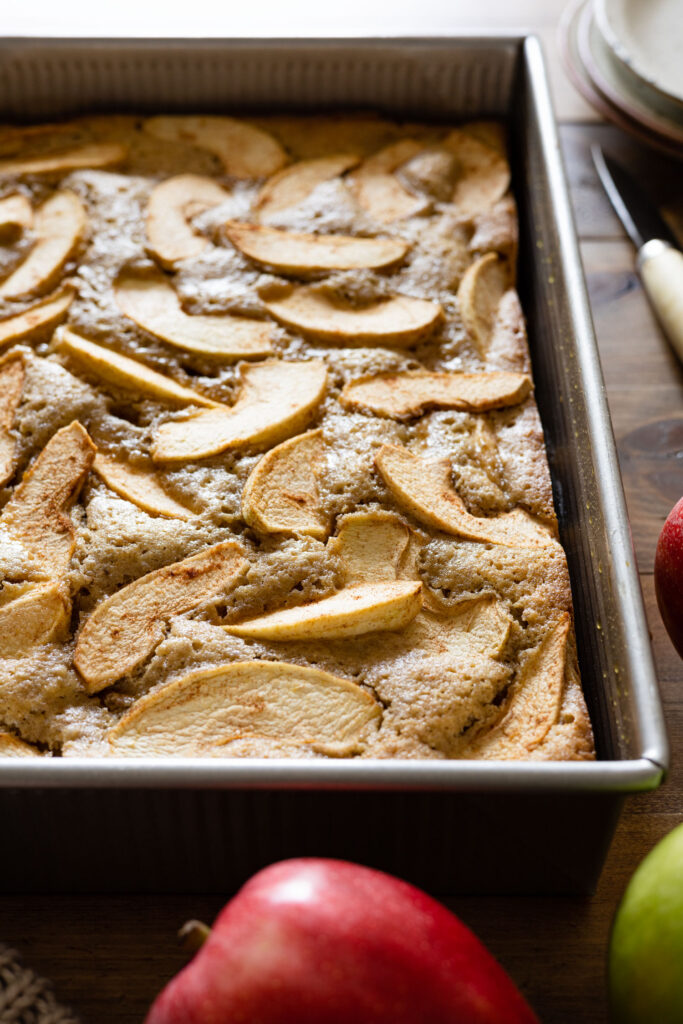
Ingredients in Apple Rye Cake
- Butter — I almost always use unsalted butter so I can control the amount of salt in a recipe. I prefer richer, European-style butter, or butter with at least 82% butterfat. Whatever unsalted butter you normally use for baking will work fine.
- Buttermilk — buttermilk adds a slight tanginess and actives the baking soda.
- Rye flour — dark rye flour, or wholemeal rye flour, adds nutty earthiness and a slightly sour note.
- All-purpose flour — rye flour doesn’t have the gluten-forming capabilities that wheat flour has. Using some all-purpose flour provides additional structure and prevents the rye from overwhelming the flavor.
- Baking powder — a rising agent.
- Baking soda — a rising agent that is activated by the acid in buttermilk.
- Salt — for consistency in my recipes, I’ve been using Diamond Crystal Kosher salt. Substitute with 1/4 teaspoon table salt or 3/8 teaspoon of Morton Kosher salt.
- Apples – for baking, use Granny Smith, Jonagold, Braeburn, or Honeycrisp apples.
- Cinnamon
- Eggs — whipped eggs provide extra structure.
- Sugar — granulated cane sugar adds sweetness and contributes to a tender crumb. Brown sugar would make the cake dense.
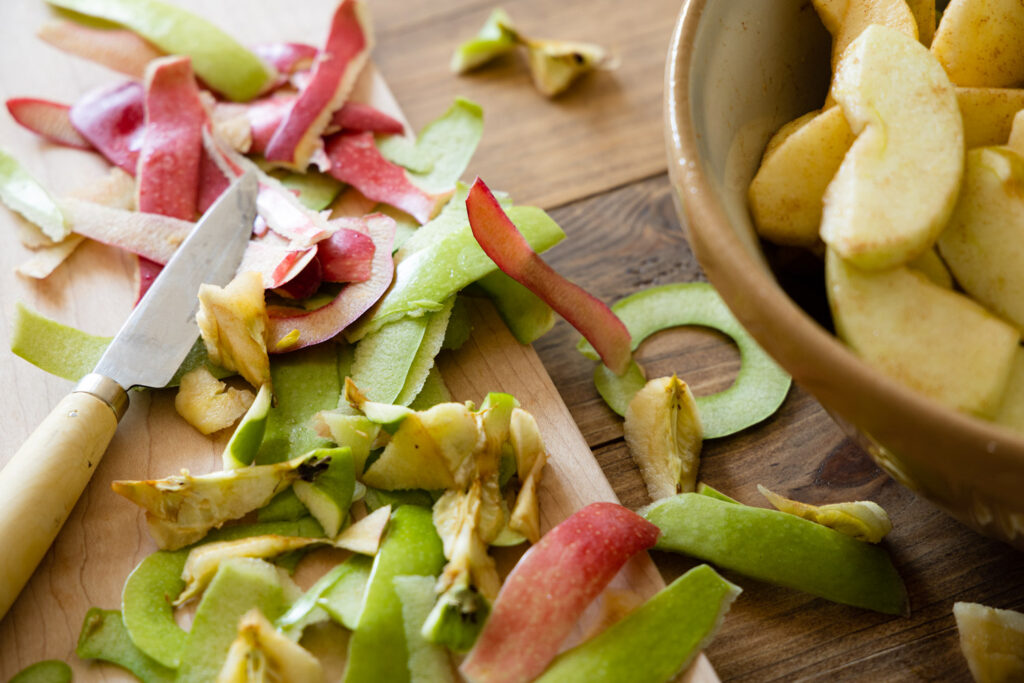
One Cake, Many Seasons
There are many variations of this cake you can try throughout the year. This cake would also work with pitted, halved cherries, wild blueberries, and sliced stone fruits like yellow peaches, apricots, or plums. Switch the fruit according to what you have. You can also replace the cinnamon with other spices, such as cardamom or nutmeg.
How to Serve Apple Rye Cake
Think of this cake almost as a rye version of Danish Æblekage or Italian Torta di Mele. The moist cake keeps for several days so I can snack on it throughout the week when I make some coffee. It’s also a wonderful weekend morning breakfast.
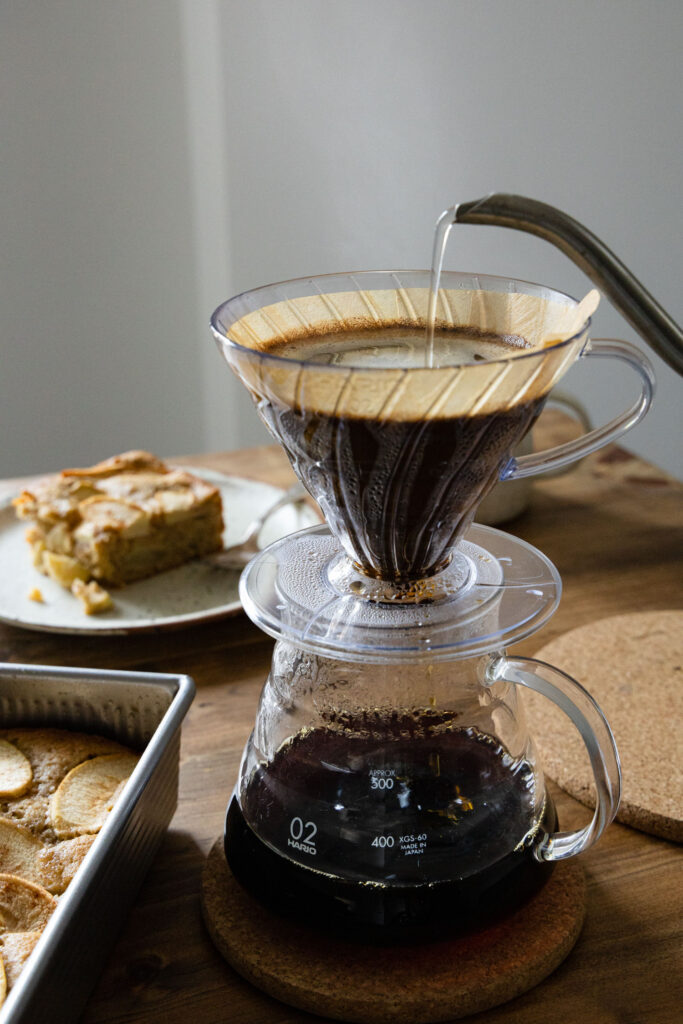
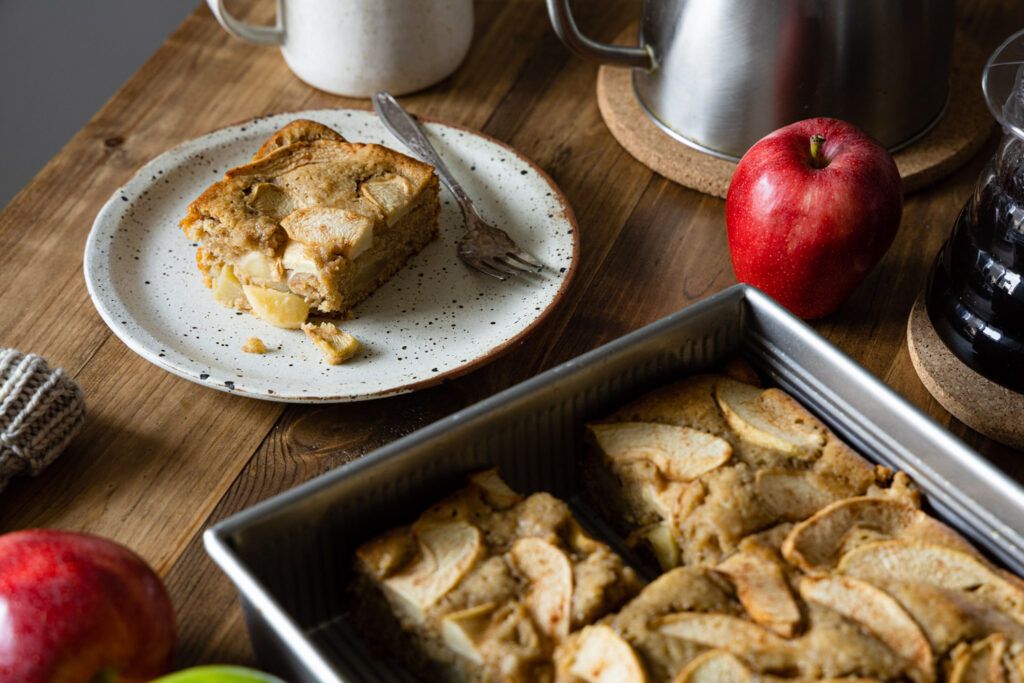
Apple Rye Cake
Ingredients:
120ml buttermilk
200g dark rye flour
120g all-purpose flour
2 teaspoons baking powder
1/4 teaspoon salt
4 medium apples, peeled, cored, and sliced
1/2 teaspoon ground cinnamon
4 large eggs
300g granulated sugar
1/2 cup buttermilk
1 2/3 cup dark rye flour
1 cup all-purpose flour
2 teaspoons baking powder
1/4 teaspoon salt
4 medium apples, peeled, cored, and sliced
1/2 teaspoon ground cinnamon
4 large eggs
1 1/2 cups granulated sugar
1. Preheat the oven:
Preheat the oven to 175°C (350°F). Grease a 23x33cm (9×13 inch) pan liberally with butter and dust it with flour.
2. Melt the butter:
Melt the butter in a small saucepan over low heat. Whisk in the buttermilk. The resulting mixture should be lukewarm and remain liquid. If the buttermilk resolidifies the butter, keep it on low heat until melted again. Take the pan off the heat and leave it to cool slightly.

3. Mix the dry ingredients:
Whisk together the rye flour, all-purpose flour, baking powder, and salt in a medium mixing bowl.
4. Toss the apples with cinnamon:
In another bowl, toss the sliced apples with the cinnamon until they’re evenly coated.
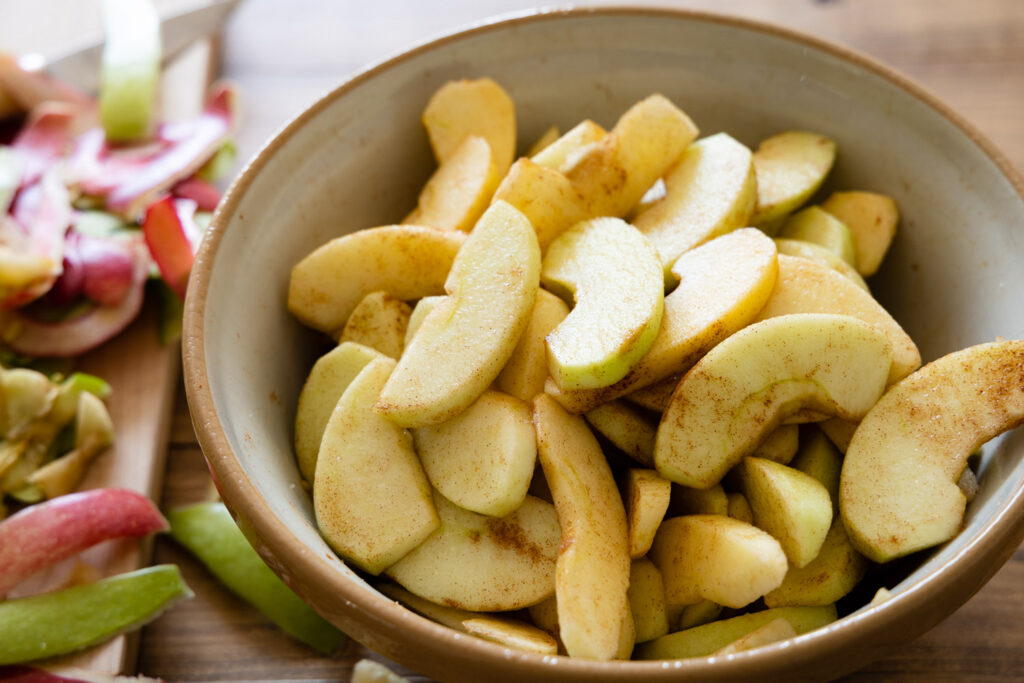
4. Whip the eggs:
In the bowl of a stand mixer with the whisk attachment, or a large bowl with a hand mixer, whip the eggs and sugar on high speed until the mixture becomes pale yellow and expands 3 to 4 times the original volume, about 4 minutes.
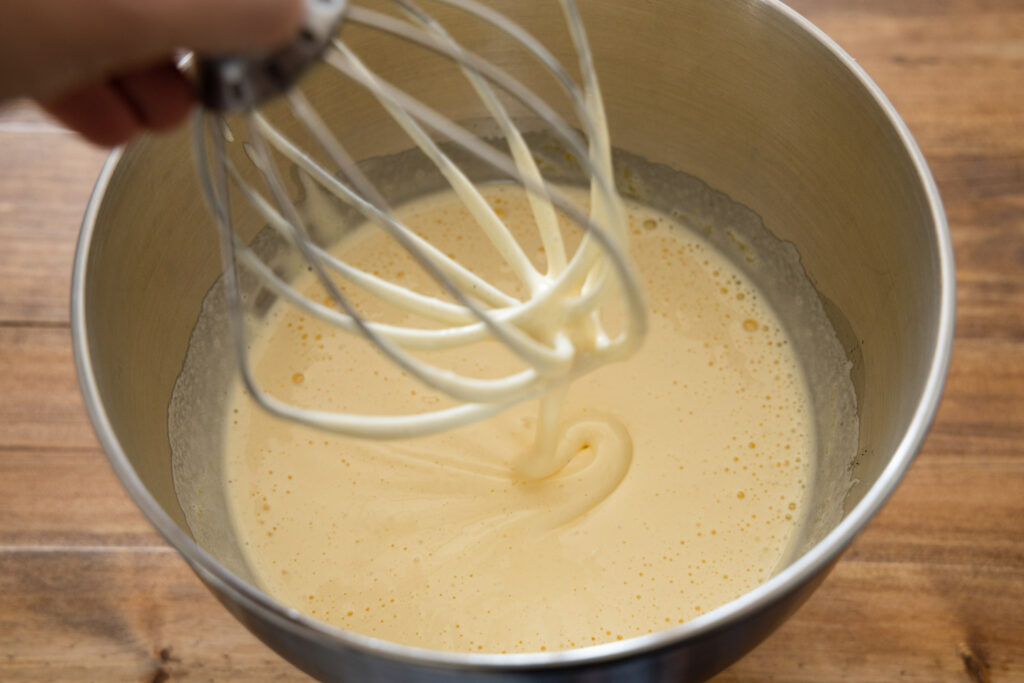
5. Fold in the dry ingredients:
With a wide rubber spatula, gently fold the dry ingredients into the whipped eggs. Whipping the eggs and sugar builds a fragile aerated structure, and working swiftly and carefully prevents losing too much volume.
6. Finish the batter:
Fold the melted butter mixture into the batter, working quickly but gently to preserve as much volume as possible. Stop mixing as soon as it’s combined.
Fold in half of the apples, mixing just until they’re evenly distributed in the batter.

7. Bake the cake:
Scrape the batter into the prepared pan and smooth the surface. Press the remaining apple slices into the batter, distributing them evenly over the surface of the cake.
Bake in the preheated oven for 50 to 60 minutes, or until the edges start to brown and pull away from the sides of the pan. A wooden skewer inserted into the center of the cake should come out clean.

8. Cool:
Leave the cake to cool in the pan for at least 15 minutes. Serve warm or at room temperature.

9. Storage:
Store the cake airtight on the counter for up to 3 days or in the refrigerator for up to 5 days.

No Comments